Ongoing documentary project by Laurent Sturm
& Anthorpologist Dr Lis Kayser (2021 - present)
NEWS: Book NUCLEAR PARADISE published in December 2024
Order your copy via LAURENT.STURM@GMAIL.COM
or at LIBRAIRIE ERNSTER & DIDERICH
& Anthorpologist Dr Lis Kayser (2021 - present)
NEWS: Book NUCLEAR PARADISE published in December 2024
Order your copy via LAURENT.STURM@GMAIL.COM
or at LIBRAIRIE ERNSTER & DIDERICH
View of the lagoon, Stellio's family hut, Hao 2021
Nuclear Paradise
The French Polynesian Hao atoll, located in the South Pacific, was transformed into a major military base for the French nuclear weapons testing program (1966-1996). Little is known in Europe, including France, about the severe effects of French nuclear weapons testing on the environment, health, and everyday life of the Polynesian people. Today, roughly 25 years after the last test, the daily life of the local residents of the Hao atoll is marked by nostalgia for the military past, discontent about the gloomy present, and hope for a better future.
Following the shutdown of the French military base on Hao in 2000, the unemployment rate on Hao rose significantly. Many of the atoll’s 1,200 inhabitants felt abandoned by the French military and eventually came to realize that the "golden age" of France's military presence had come with a high price, namely socio-economic dependence and contaminated land.
Life on Hao is quiet today. It is marked by small-scale fishing, copra harvesting and celebrating traditional and religious festivities. This quiet island life is much appreciated by many of Hao's inhabitants who describe their home island as a peaceful paradise compared to life on French Polynesia’s main island of Tahiti, which seems to be more stressful because of the high population density and constant traffic jams around the capital of Papeete. At the same time this quiet life represents the Hao population’s shared feeling of being forgotten by the government authorities on Tahiti.
Hao's military nuclear past has left its mark, not only in form of the architectural remains of the French military, but also on its inhabitants, some of whom moved into the abandoned military buildings once the French military left in 2000. One can almost feel the “glorious” past in those remaining buildings. The former military facilities represent a status symbol for their occupants, and the privilege of living in robust houses (protecting them from cyclones) on undivided, collectively owned ancestral land.
The Hao Atoll - Nuclear History
In the early 1960s, Hao was drastically transformed into a military support base for nearby French nuclear weapons testing. Between 1966 and 1996, the Pacific Experimentation Centre (Centre d'Expérimentation du Pacifique – CEP) tested 193 nuclear devices on Moruroa and Fangataufa, two atolls located some 400 kilometers south of Hao. Before the arrival of the French military, less than 200 people lived in small subsistence fishing villages of copra farming and small-scale fishing.
During the atmospheric tests, Vautour military aircrafts flew into the radioactive clouds over Moruroa and Fangataufa to collect gas samples. They then flew over to Hao where they got decontaminated with seawater. When the nuclear testing activities ceased in 1996, the French army buried military waste and dumped larger military debris into the lagoon.
Despite the environmental and health impacts stemming from the testing activities, many Hao islanders look back on their military and nuclear past with a sense of nostalgia. This can be explained by the fact that the French military presence propelled considerable socio-economic growth, with lucrative job opportunities for the atoll's inhabitants, as well as free access to electricity and drinking water. The development of the atoll led to the emergence of a vibrant island life, with numerous bars, nightclubs, tennis courts, and French Polynesia's very first open-air cinema.
Timi, fisherman, Hao 2021
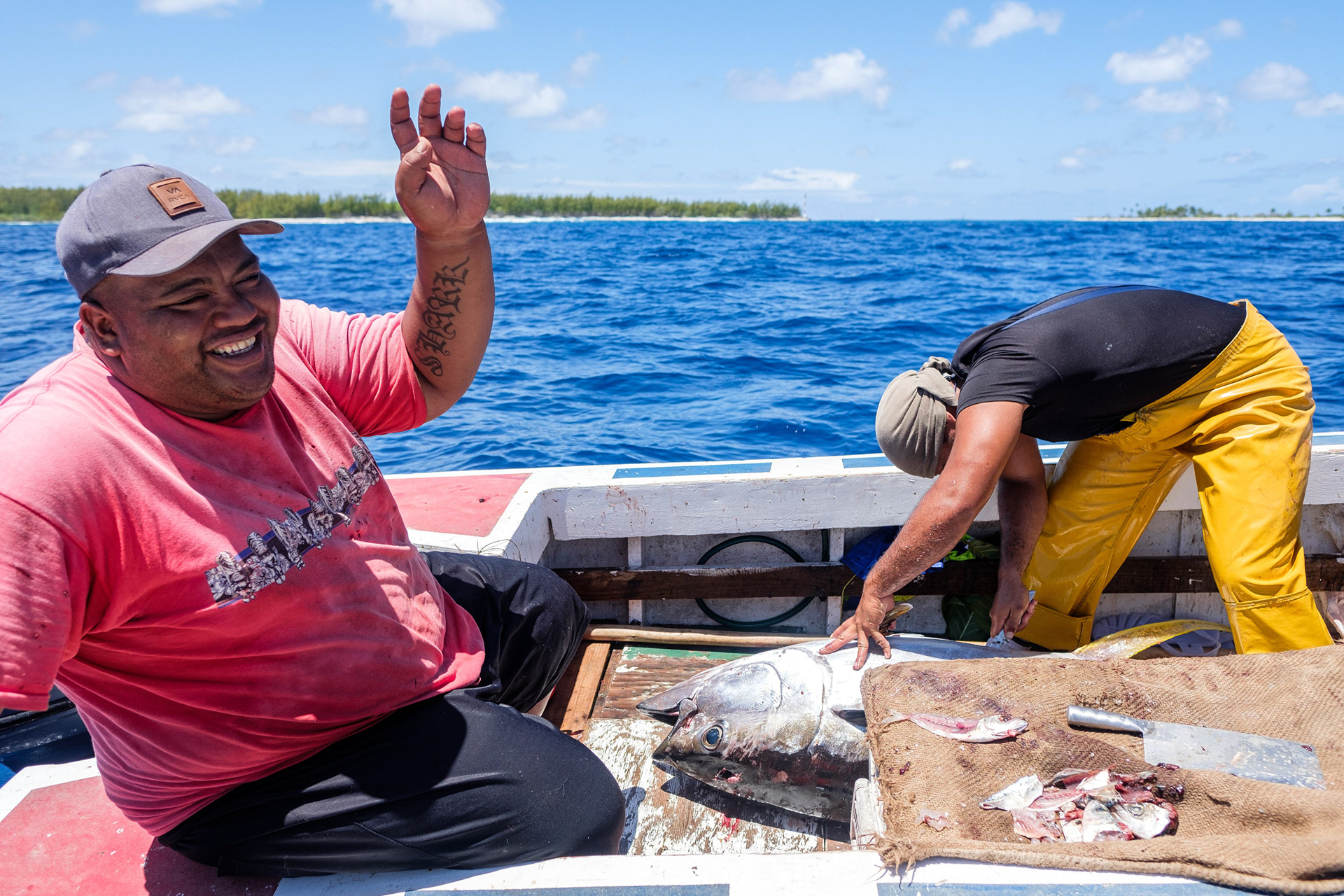
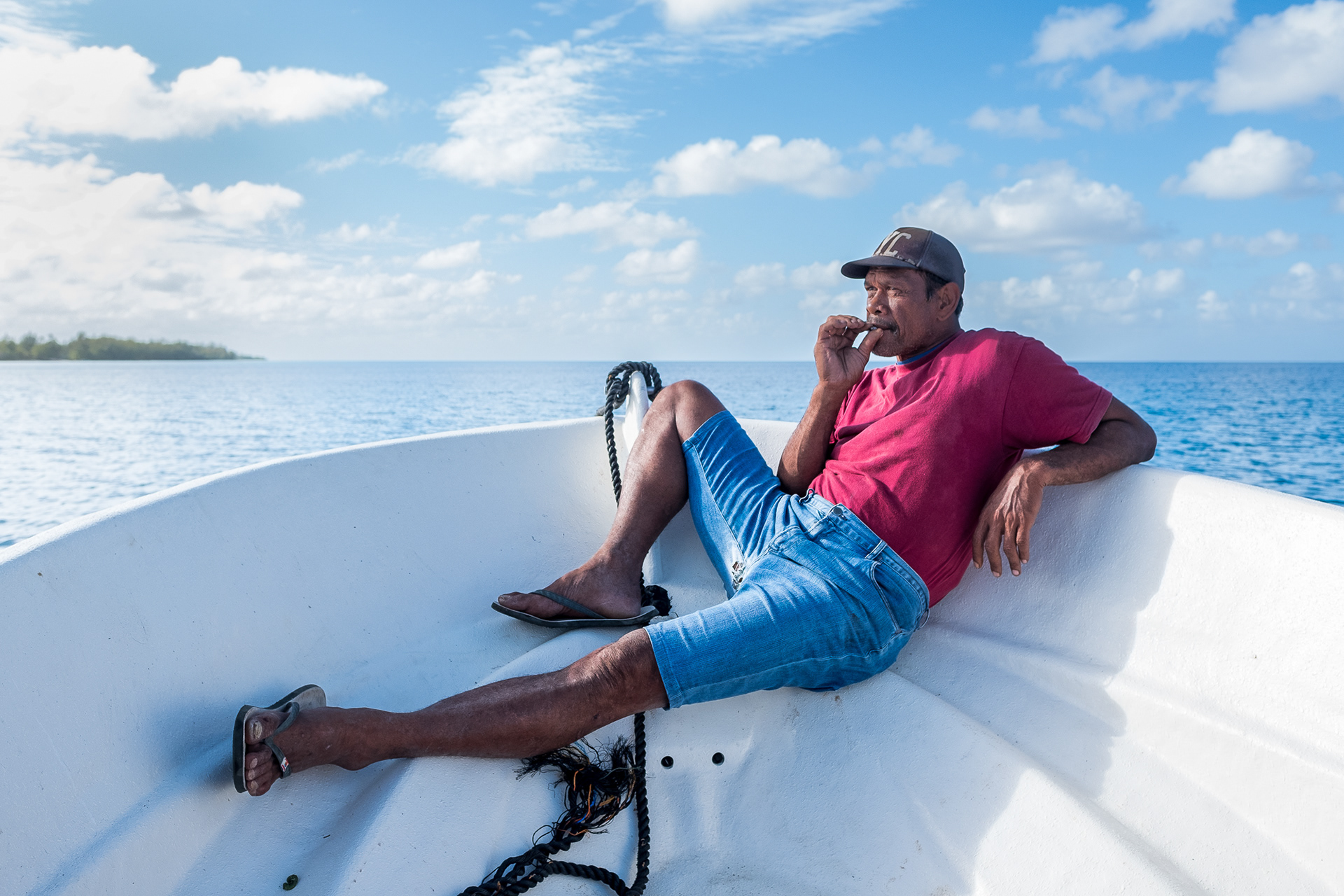
Tuna fishing, near the atoll's Kaki pass, Pacific Ocean 2021
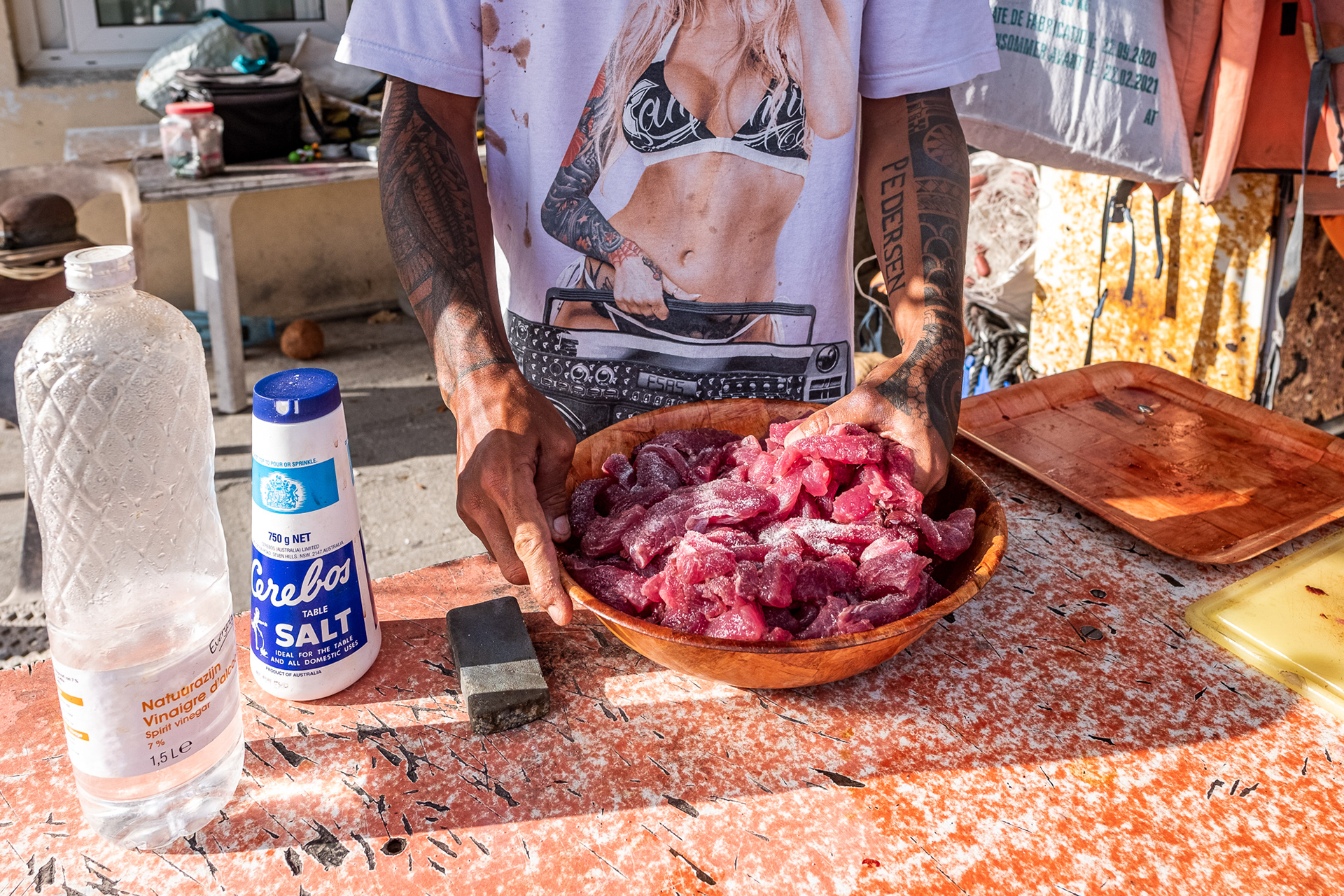
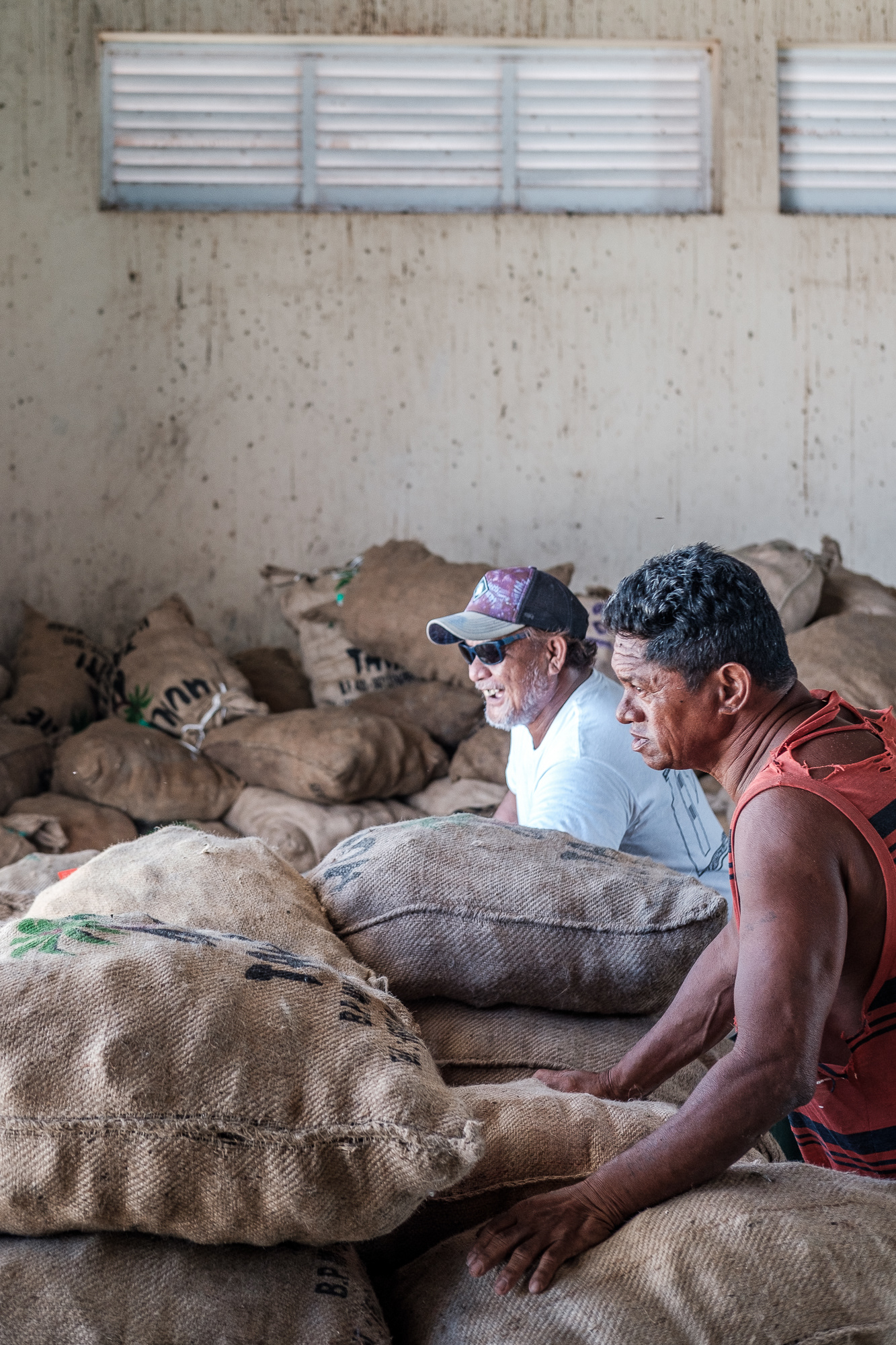
Left: Nari drying tuna, Hao 2012
Right: Loading copra for export to Tahiti, Hao 2012
Right: Loading copra for export to Tahiti, Hao 2012
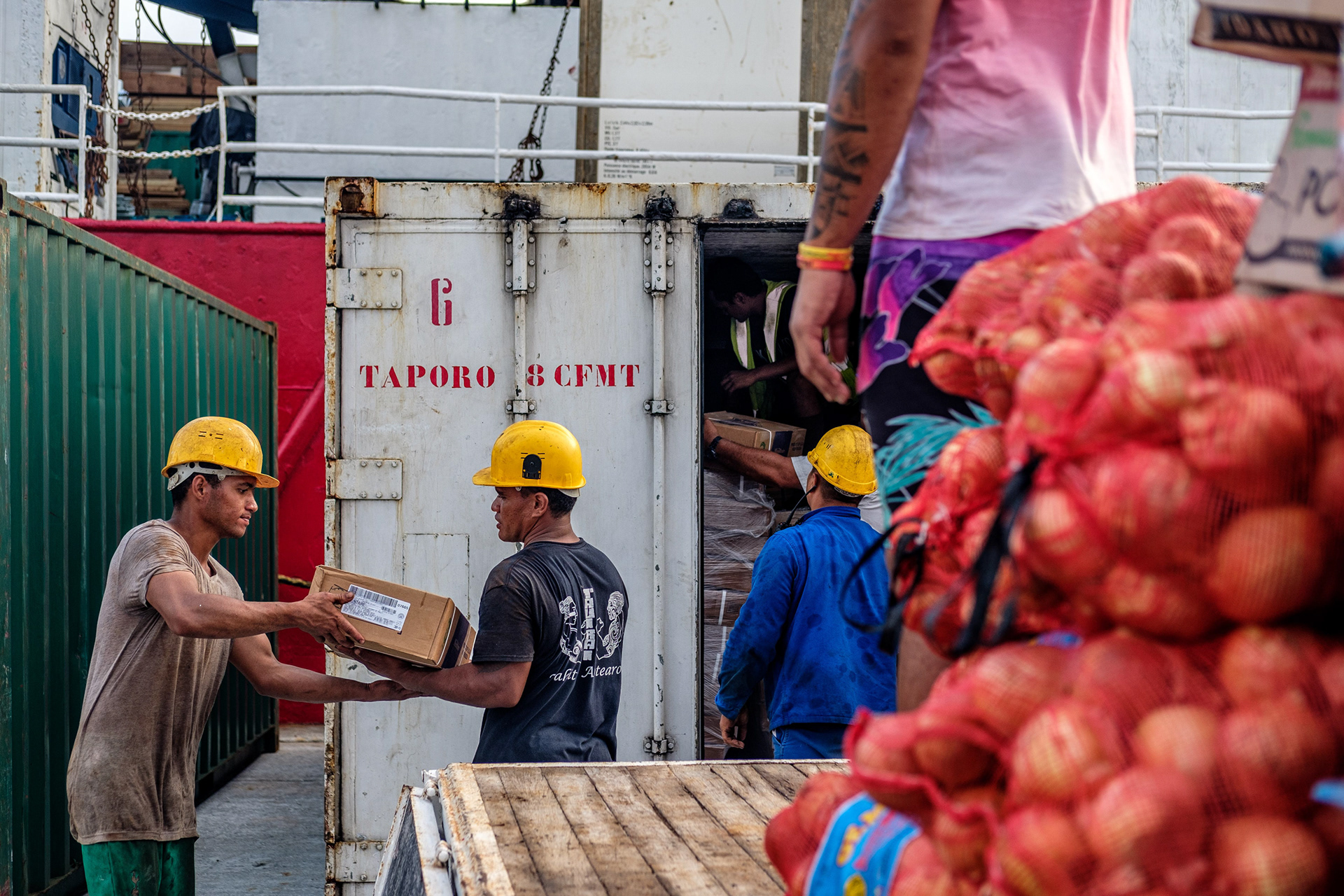
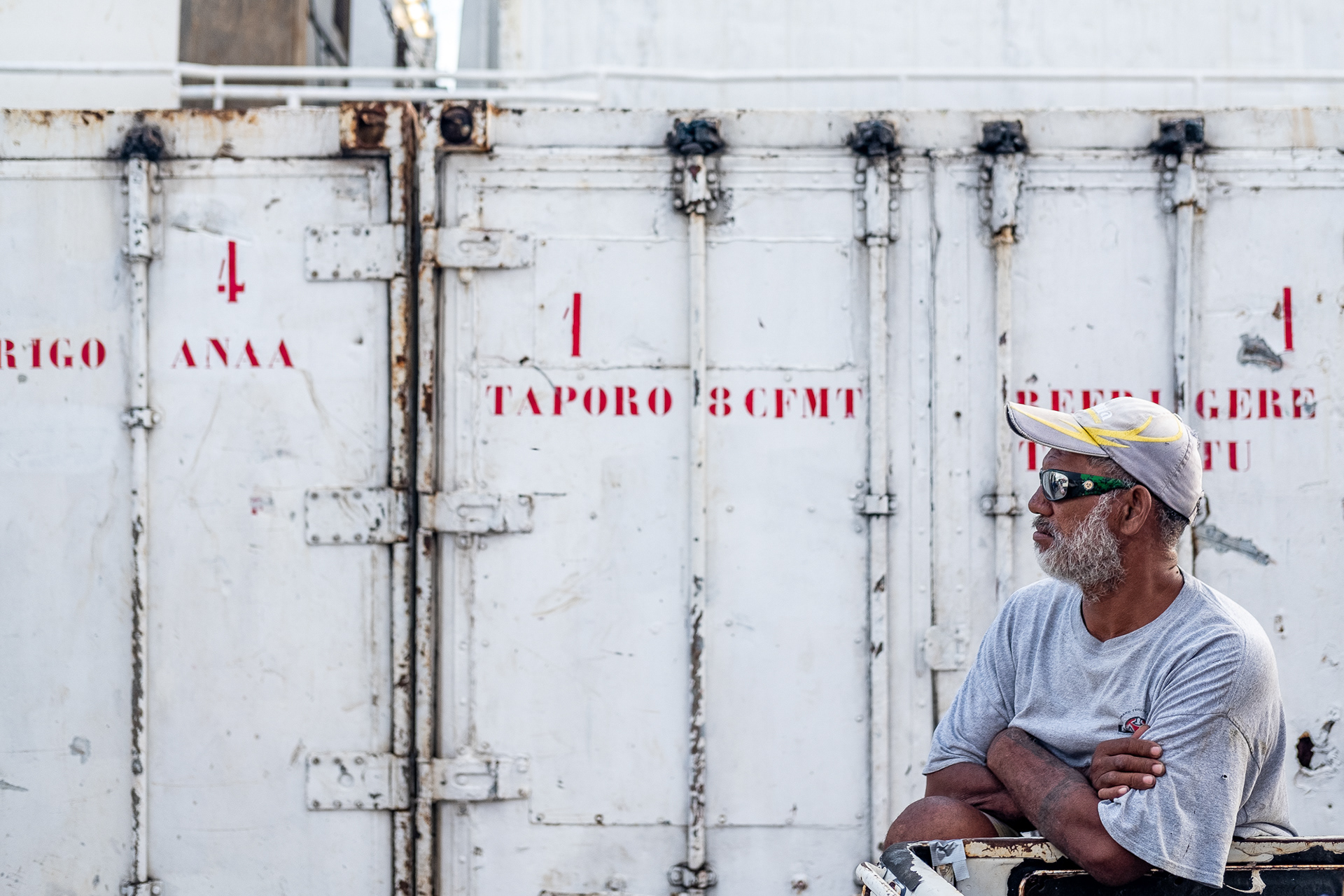
Arrival of the cargo ship Taporo VIII, maritime quay in the former military zone, Hao 2021
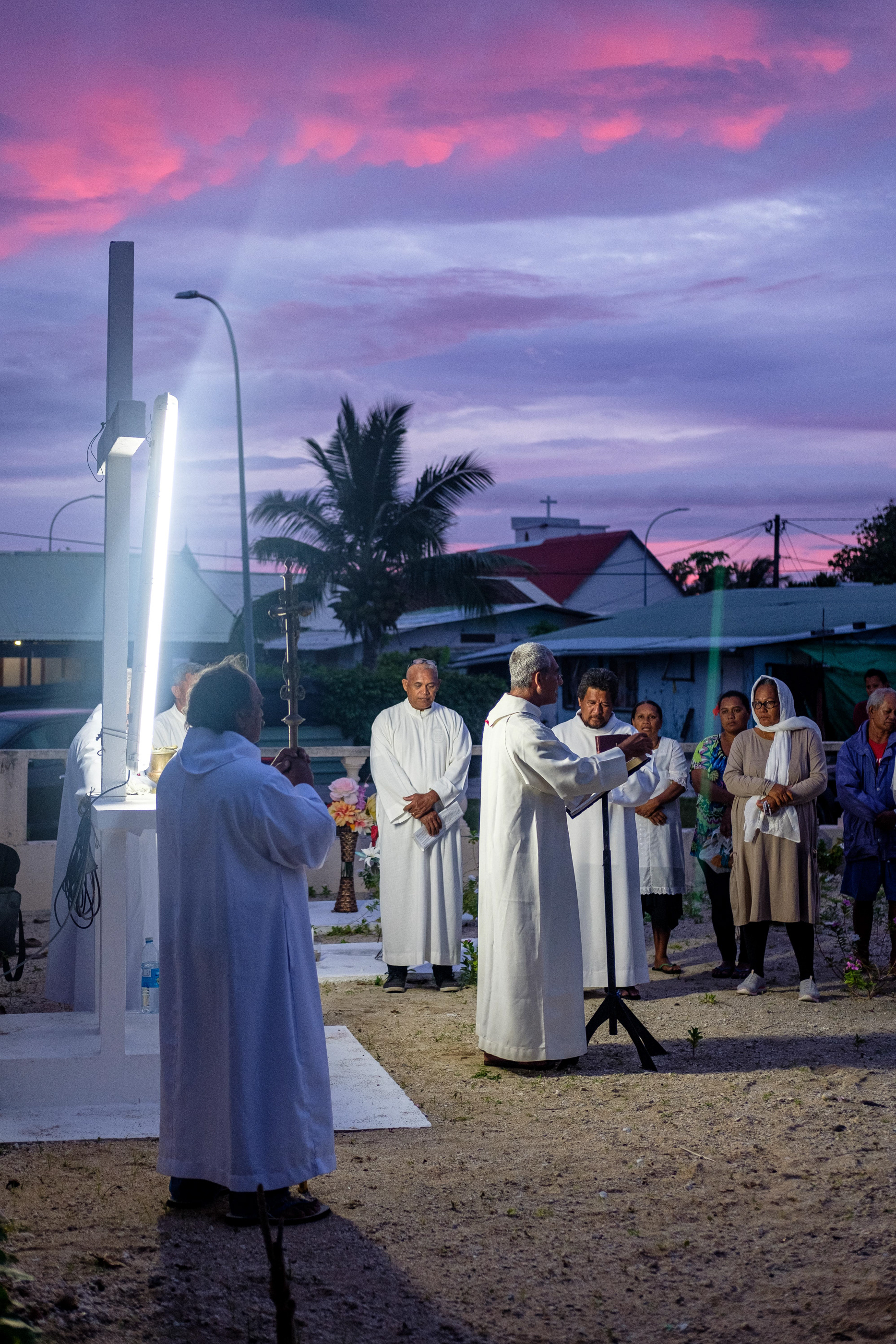
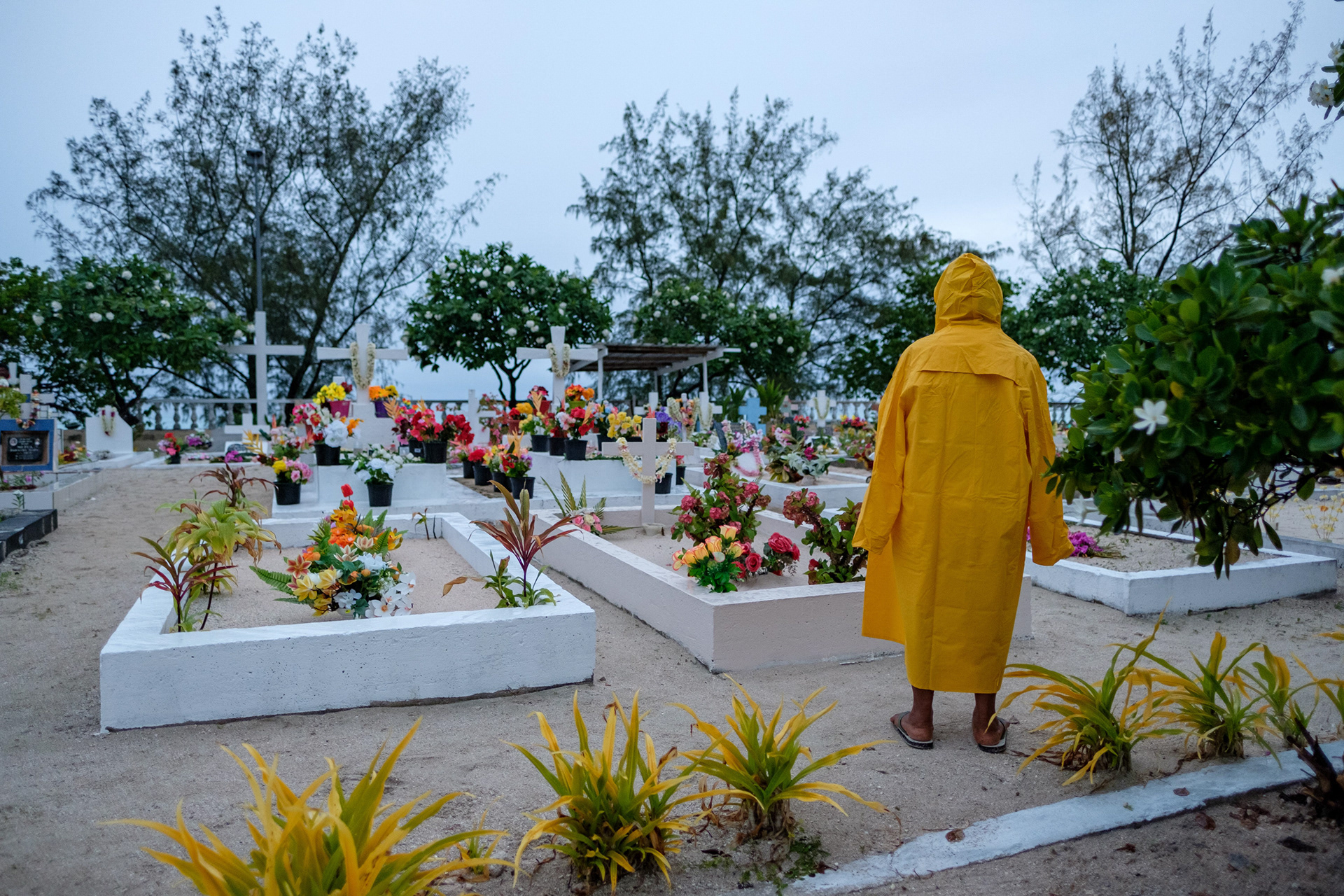
All Saints' Day Liturgy & blessing of the graves, Hao Cemetery 2021
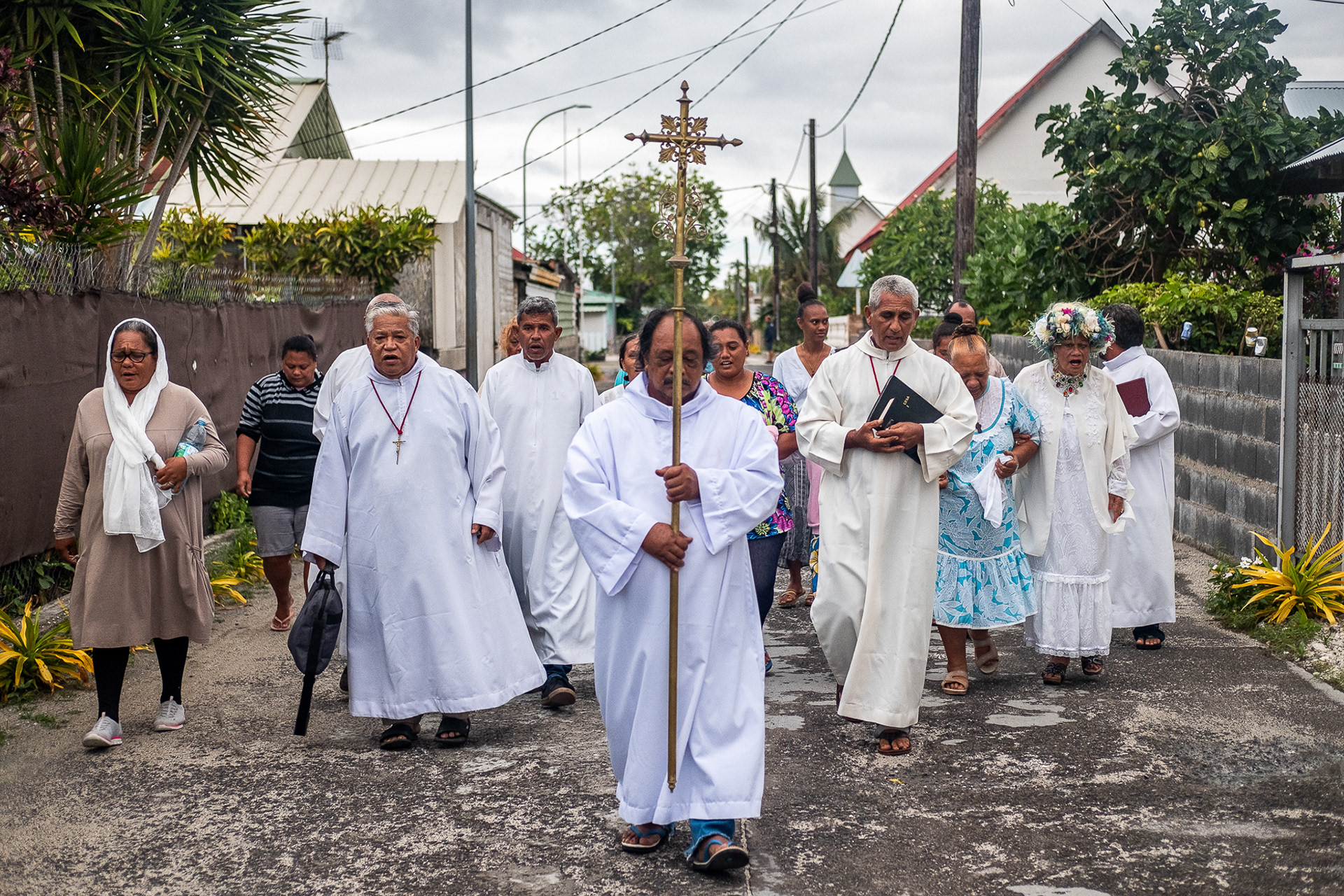
All Saints' Day Liturgy, Hao cemetery 2021
Commémoration de l'Armistice, Hao 2021

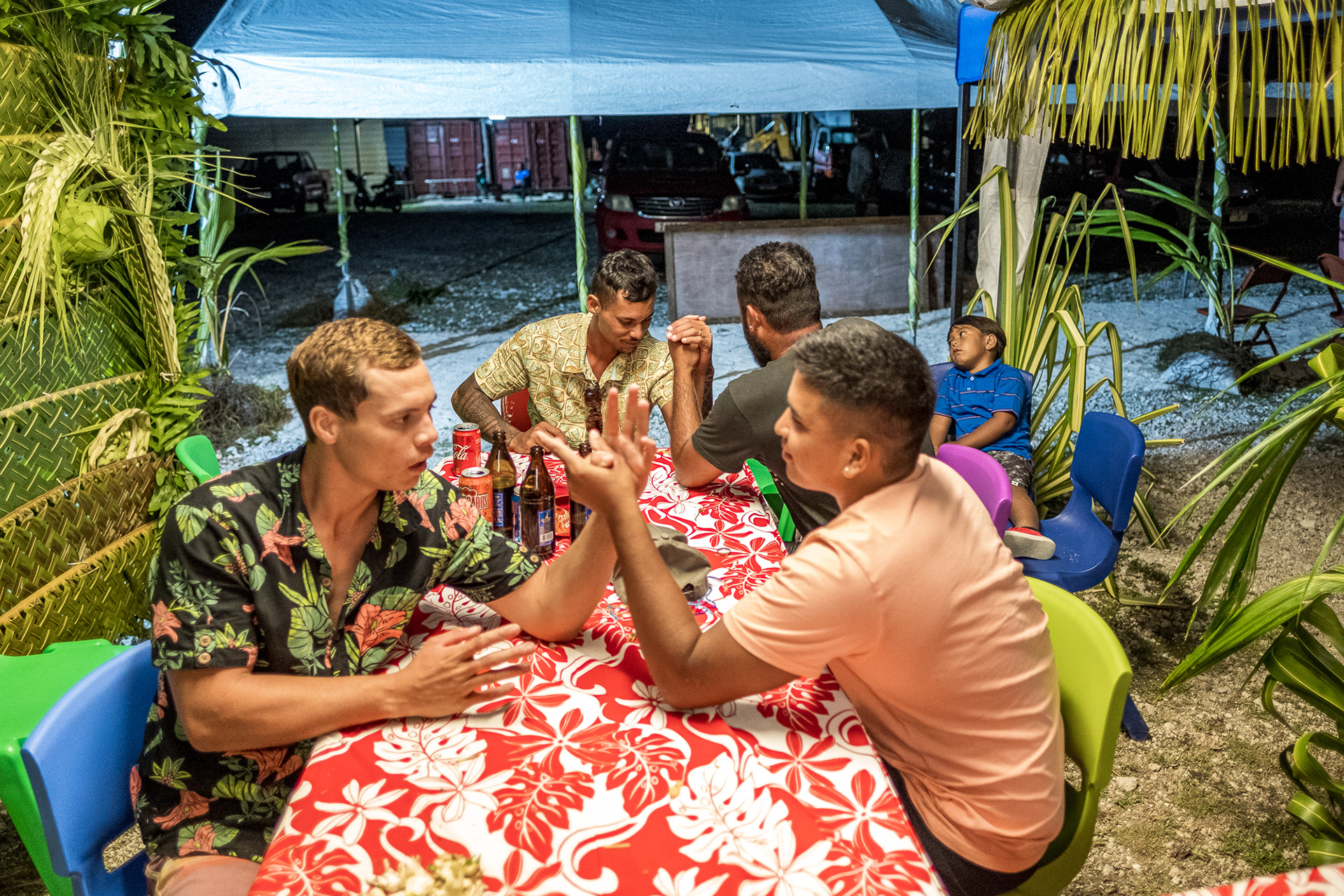
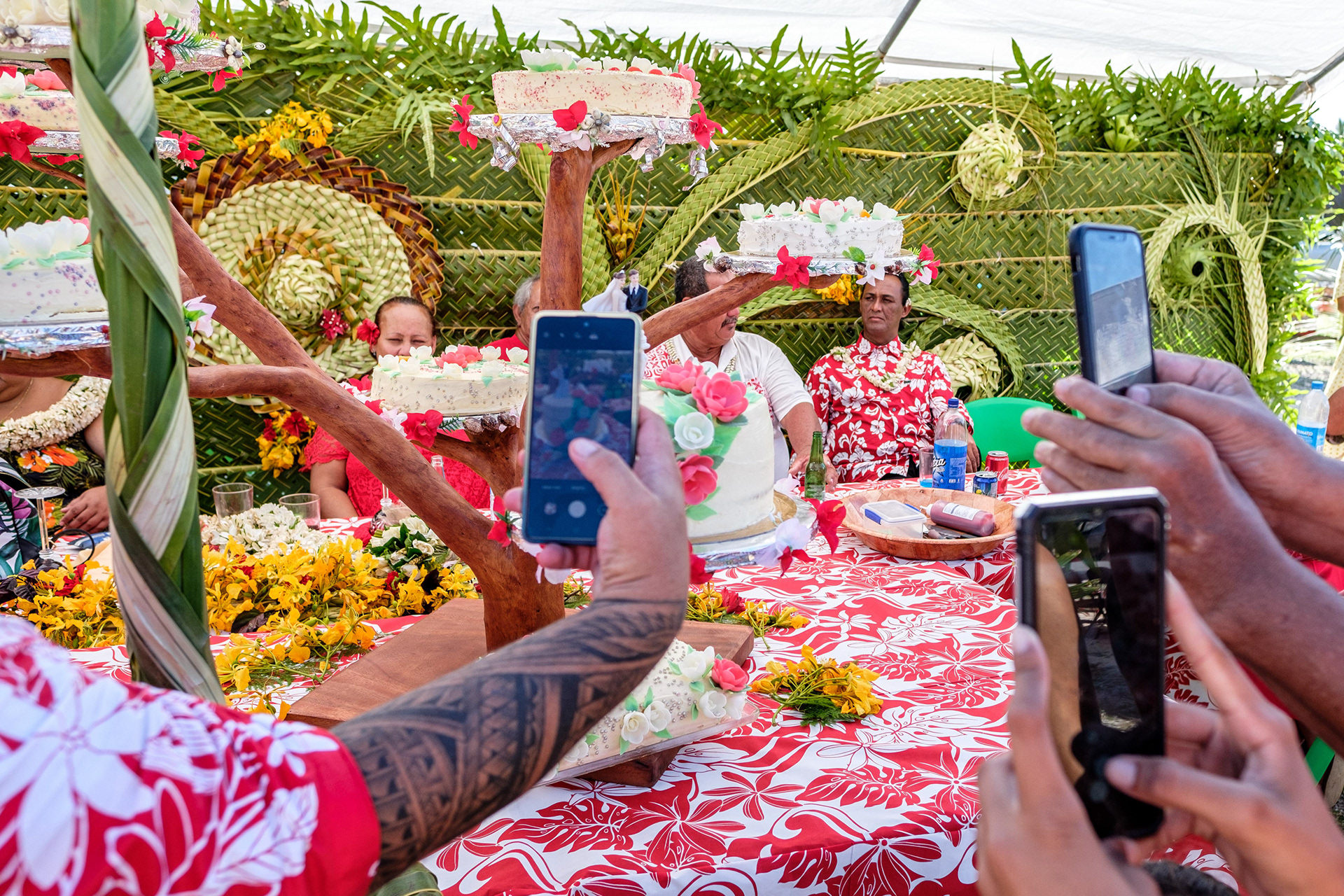
Stellio and Barbarah's wedding cake, Hao 2021
Mamie Blue International, local institution of the nuclear "golden age", Hao 2021
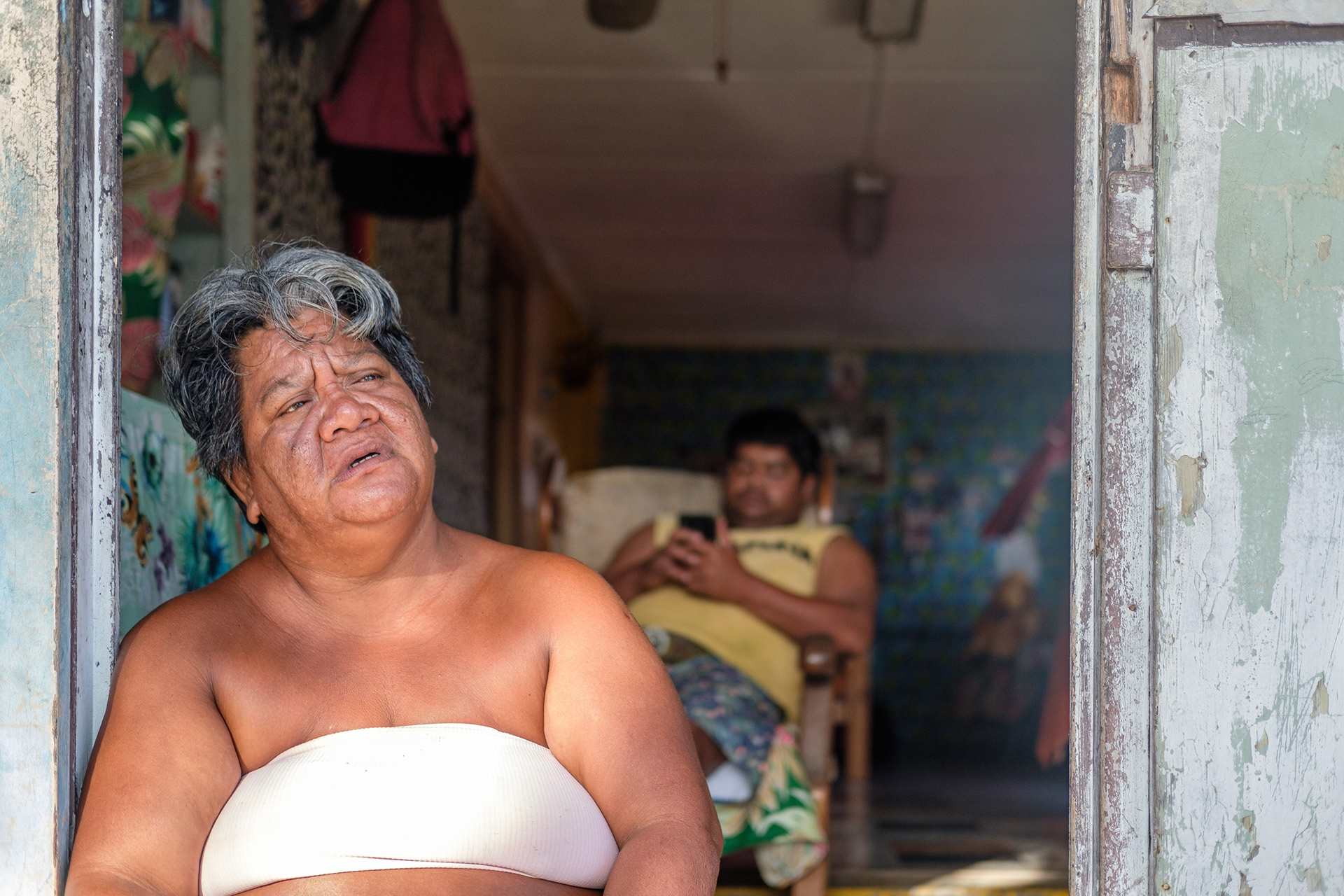
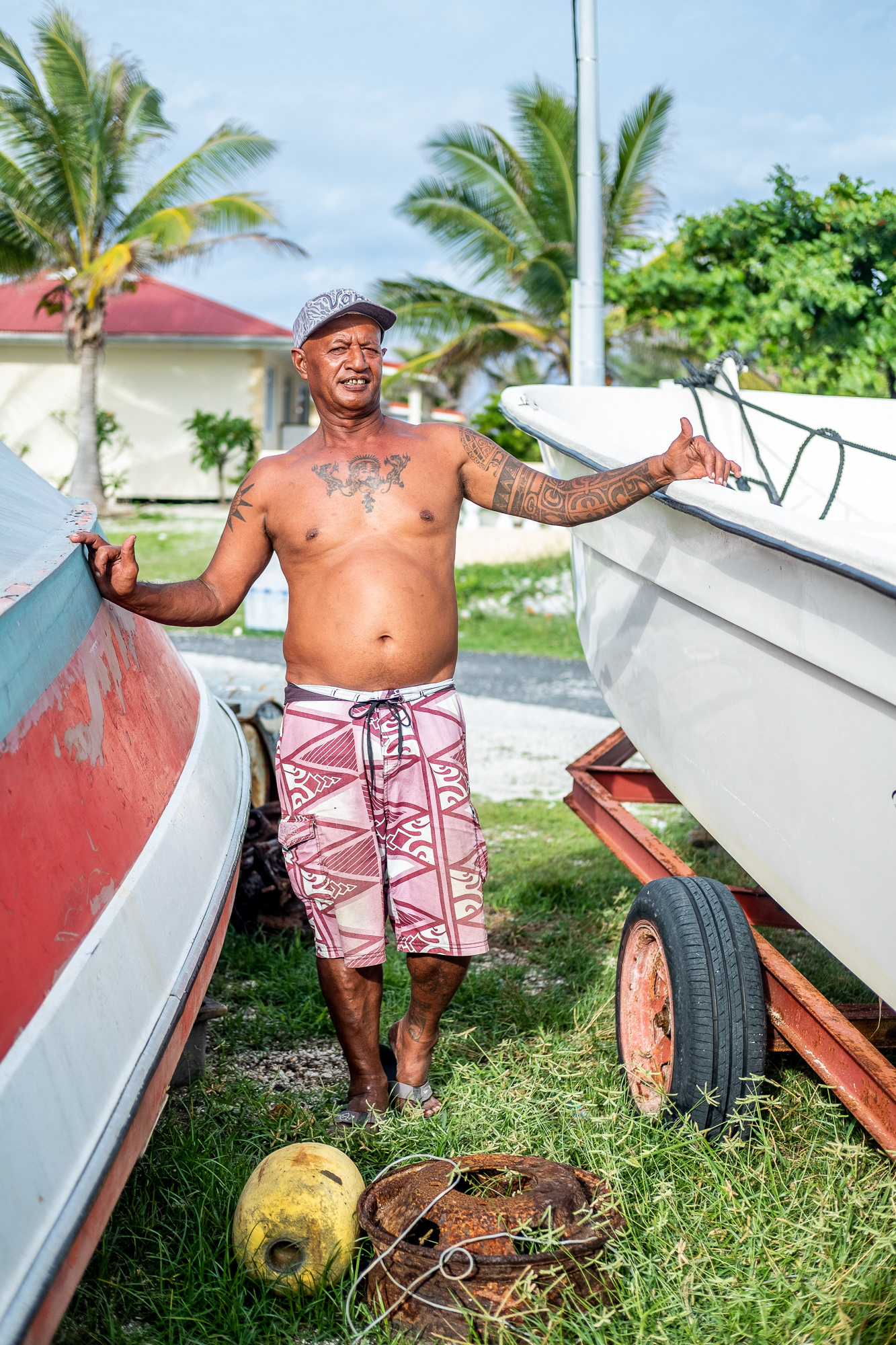
Anne & Saté, atoll residents, Hao 2021
Odile, local historian, Hao 2021
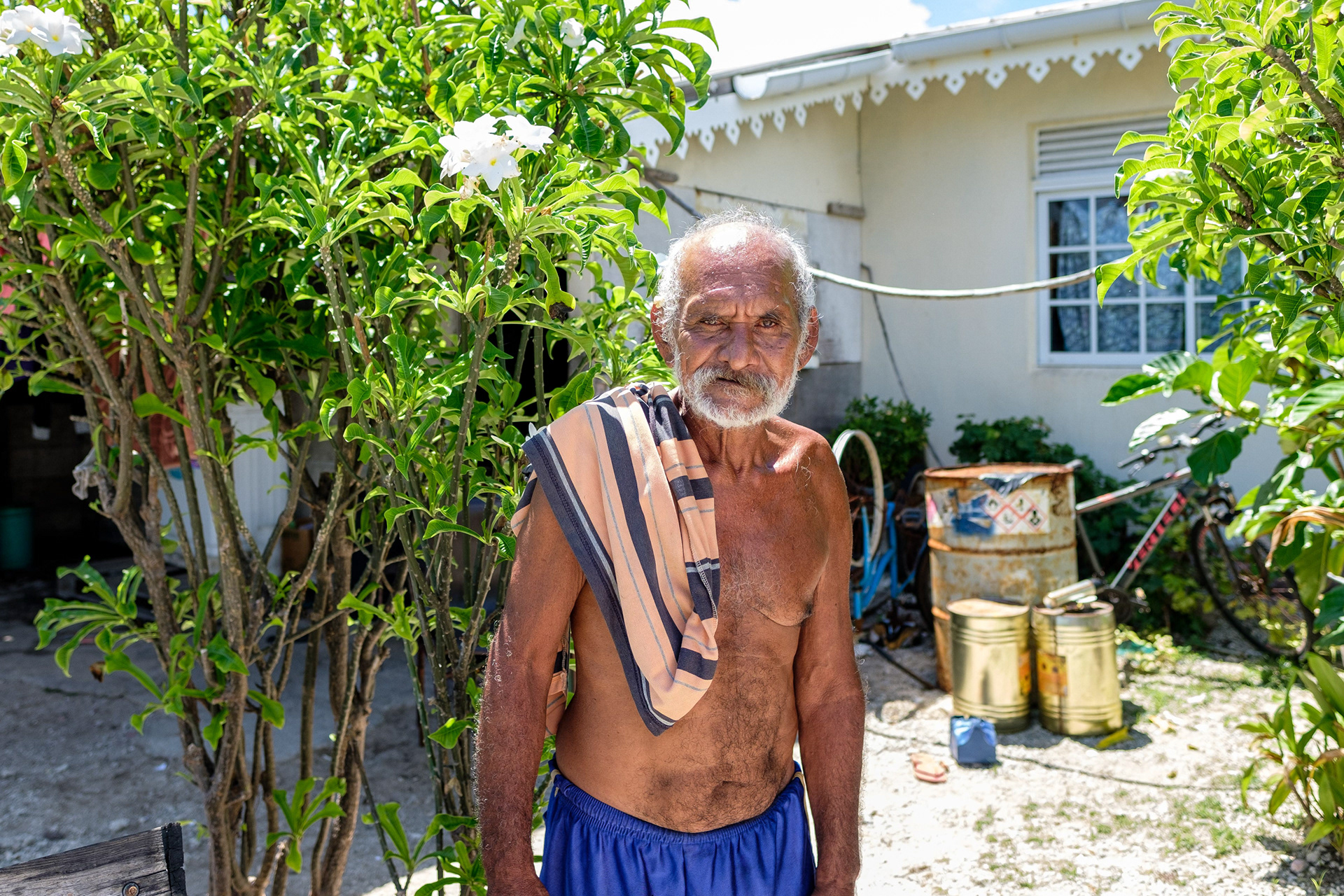
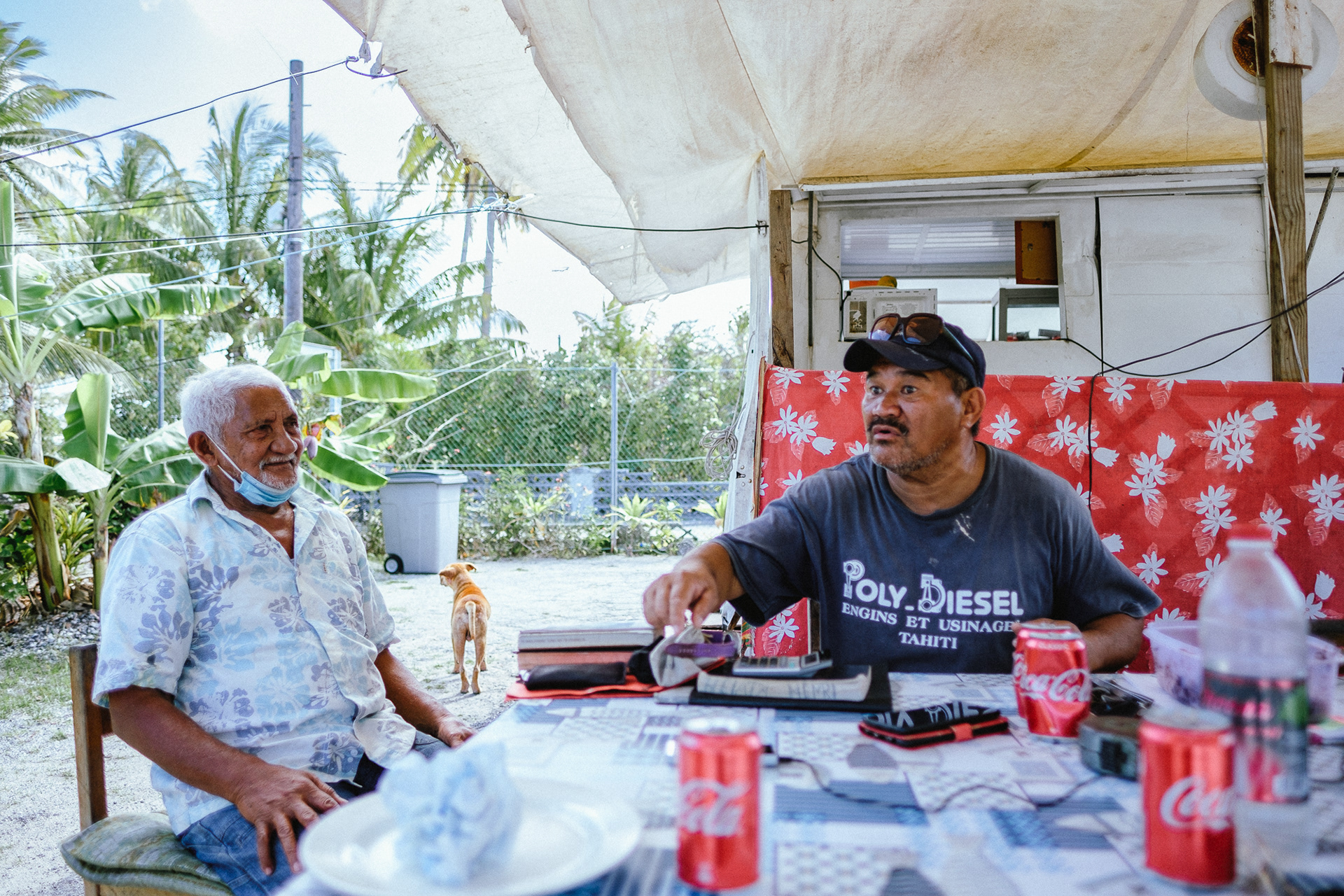
Left: Papi Hubert, resident who worked at the Moruroa nuclear test site, Hao 2021
Right: Henri et Tonino White, Hao 2021
Right: Henri et Tonino White, Hao 2021
Bubu, military veteran, Hao 2021
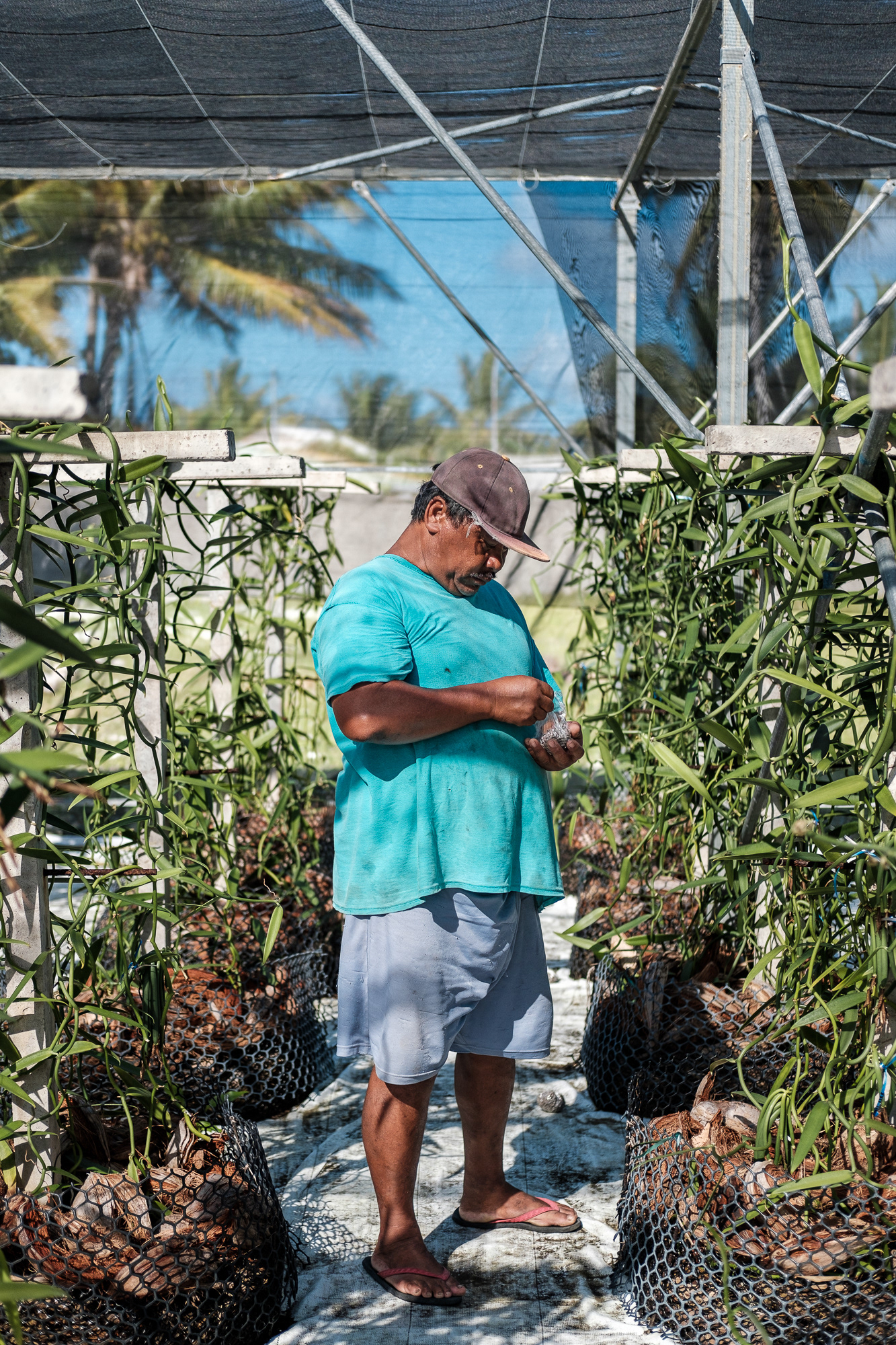
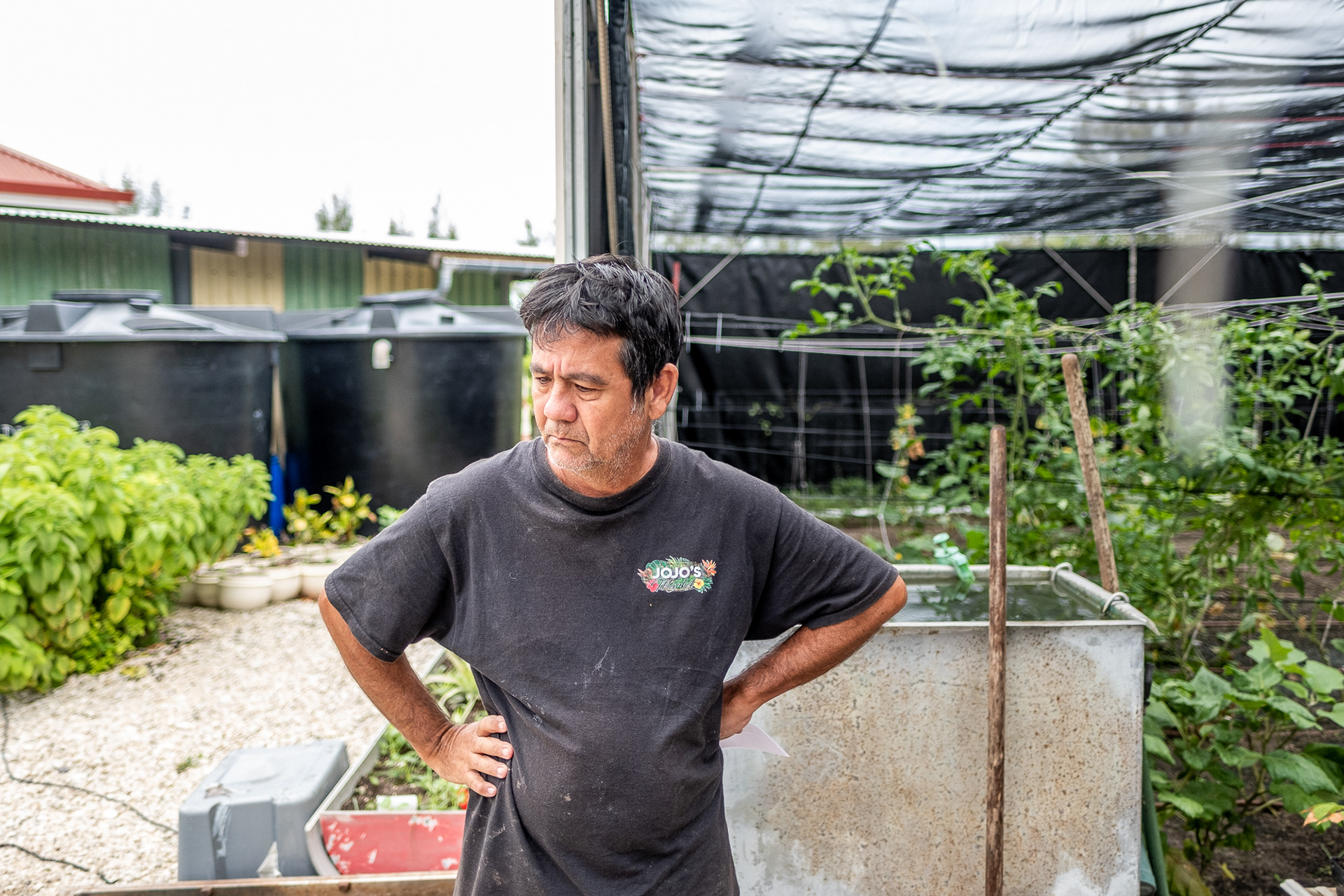
Left: Alexandre is taking care of the coomunal vanilla plantation, Hao 2021
Right: Coco, vegetable farmer, worries about polluted soil on the atoll, Hao 2021
Right: Coco, vegetable farmer, worries about polluted soil on the atoll, Hao 2021
Former military cyclone shelter, Hao 2021
The communal "Memory Room" showing photos from Hao's former military base and French nuclear tests in French Polynesia, Hao primary school 2021
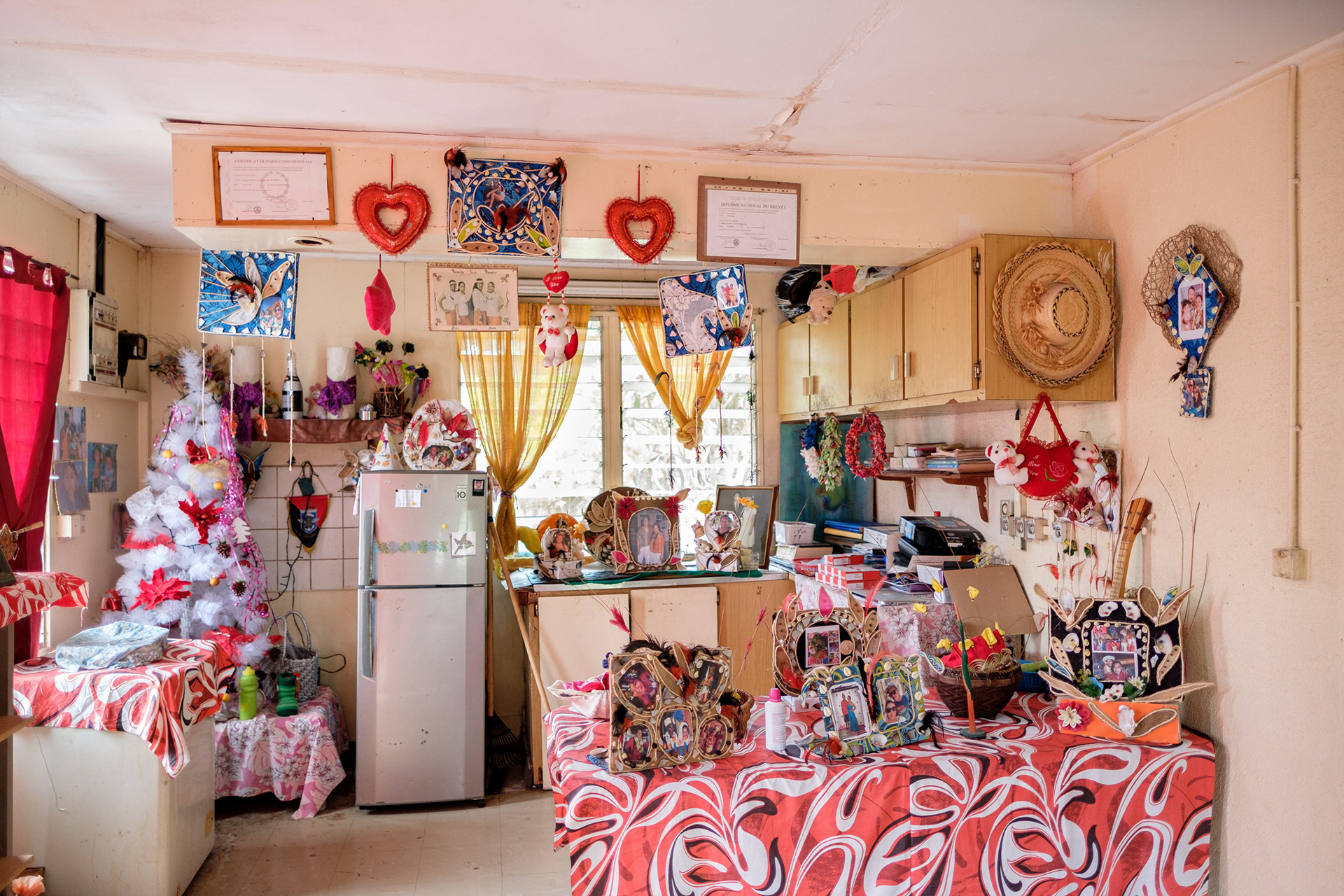
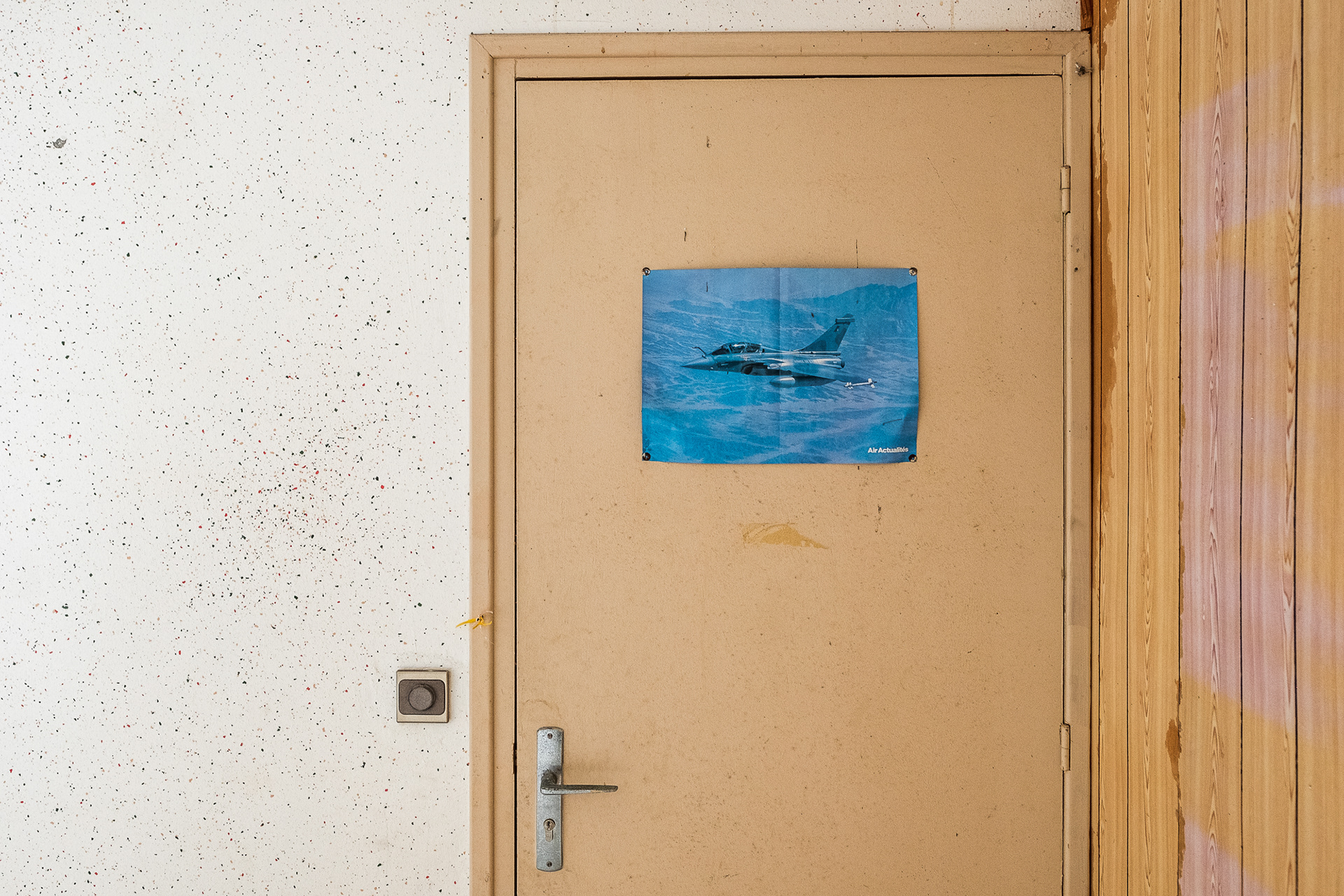
Left: Living room of the former military doctor's house, owned by Georges and his family, Hao 2021
Right: Poster of a military aircraft in the former building of the "Etat Major", Hao 2021
Right: Poster of a military aircraft in the former building of the "Etat Major", Hao 2021
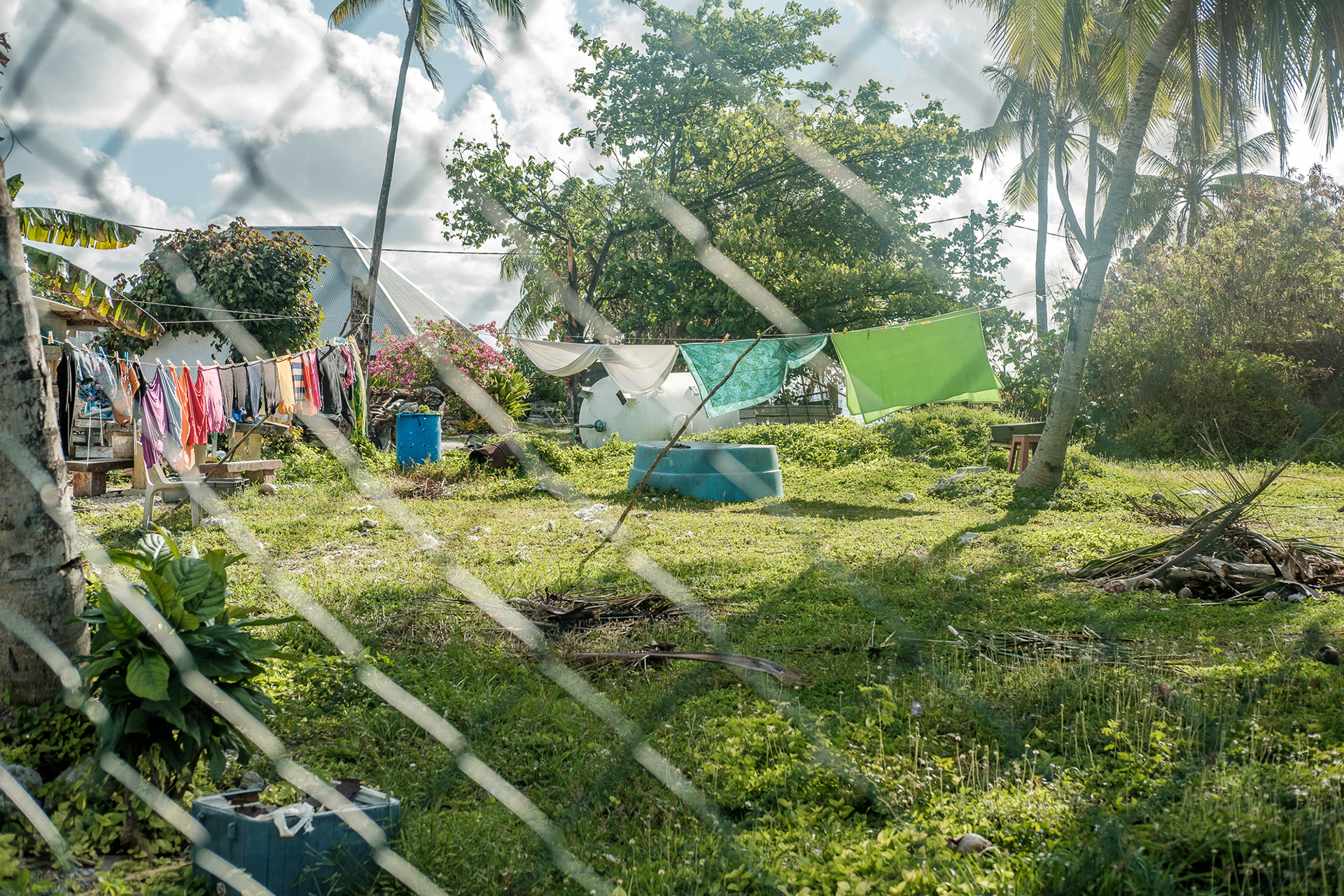
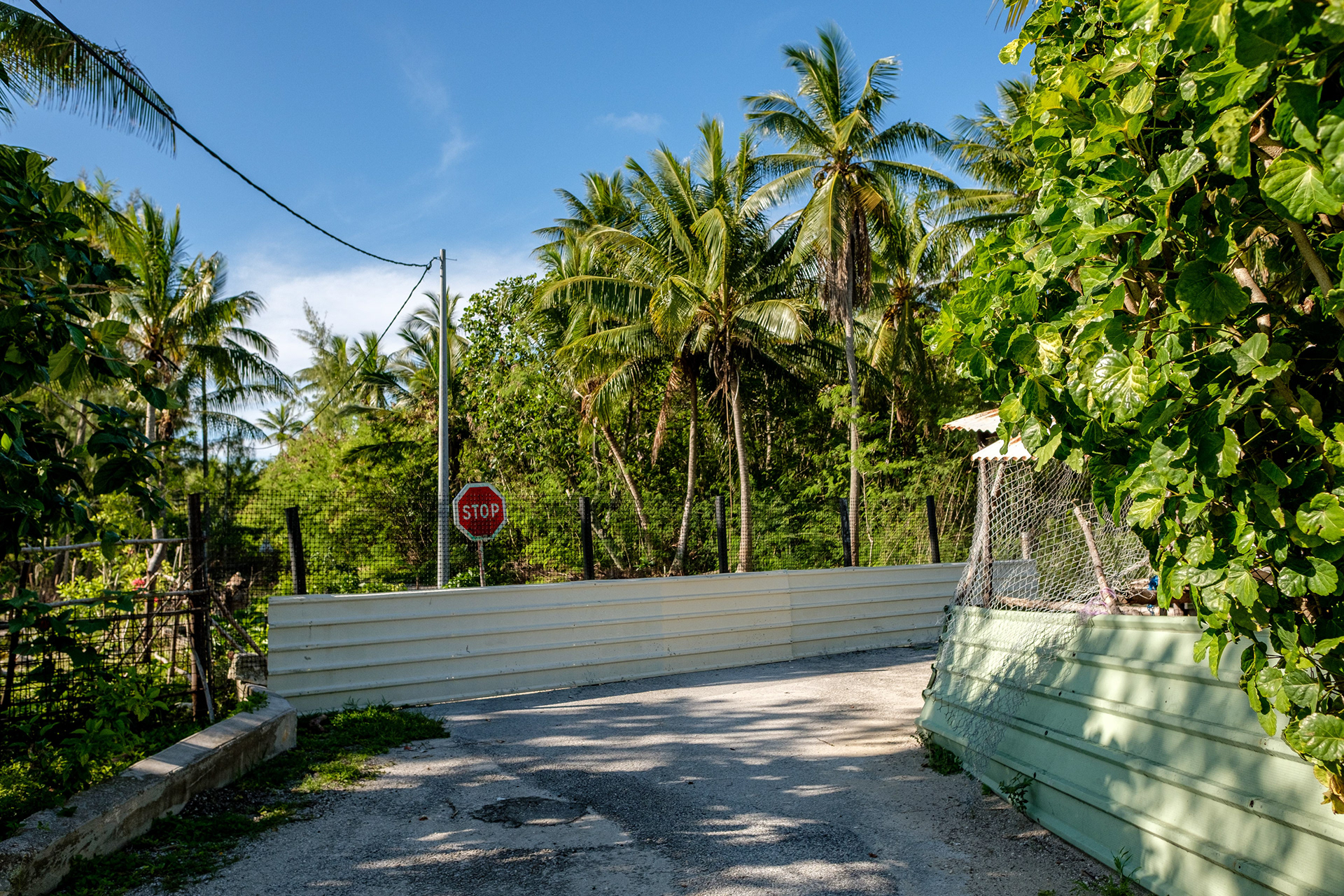
Left: Garden in the former military zone, Hao 2021
Right: Road blocking on the former military base. Undivided, private property, Hao 2021
Right: Road blocking on the former military base. Undivided, private property, Hao 2021
